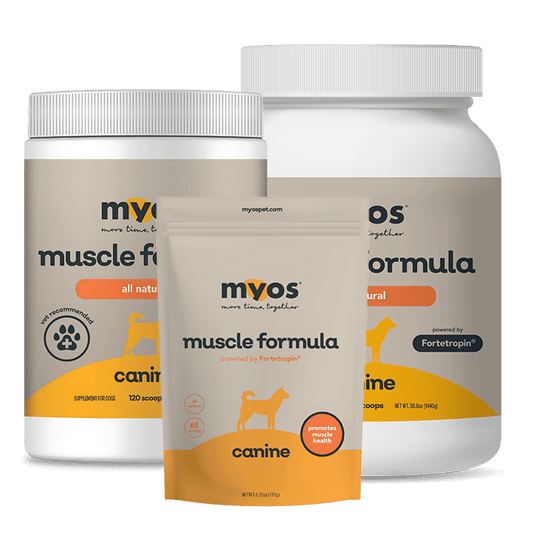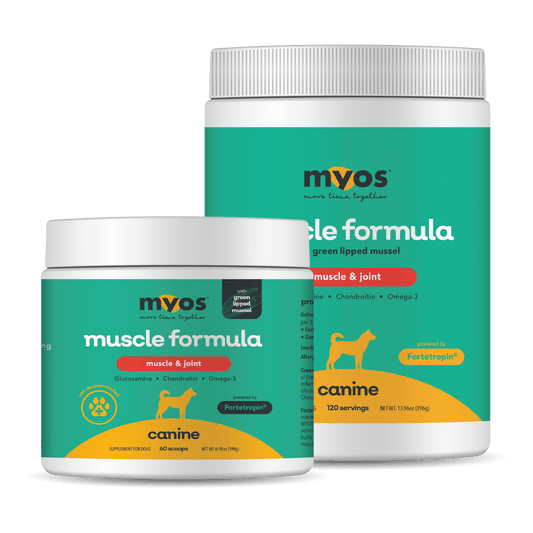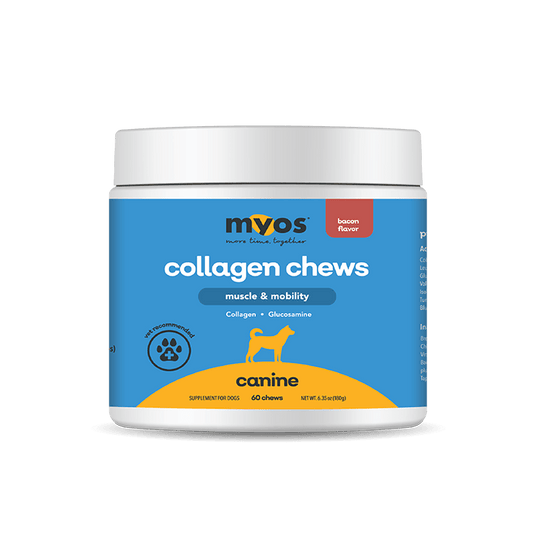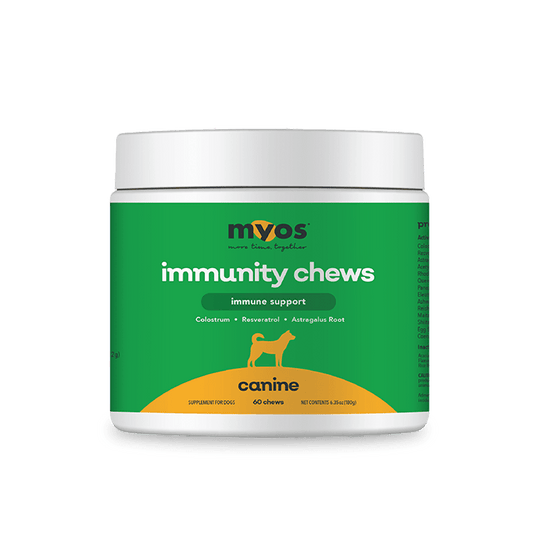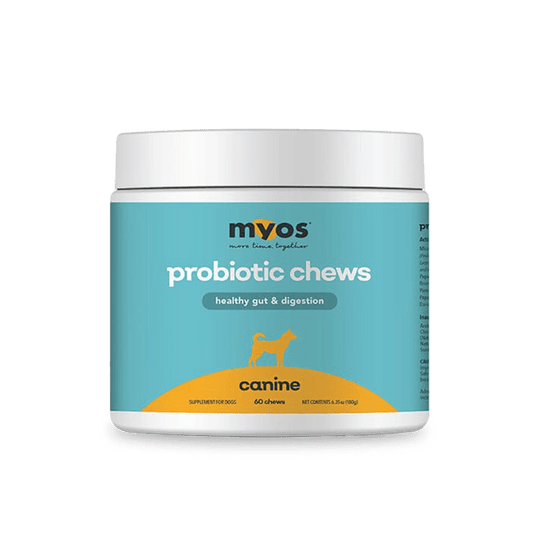In the Northern region of the world, there is evidence that humans have been using canines to pull sleds that dates back to about four thousand years. Although the racing dog industry has come a long way since that time, the demands placed on racing dogs such as those that compete in the Iditarod Trail Sled Dog Race every year in Alaska has likely not changed very much. Therefore, nutrition plays a vital role due to the extreme demands that competition places on competitive racing dogs [1]. Beyond addressing the unique macronutrient needs of these racing dogs, veterinarians can incorporate specific nutritional supplements to the dietary regimen of these dogs to attenuate inflammation, reduce DNA damage due to oxidative stress, improve muscle health and address the disturbances to gastrointestinal health that extreme competition frequently results in. In this blog post, we will address nutritional supplements such as krill, vitamin E, Fortetropin and tryptophan in the context of the aforementioned properties.
Krill
The Iditarod Trail Sled Dog Race is a very challenging dog sled race that takes place annually in March between Anchorage and Nome. In preparation for the extreme endurance demands of the race, veterinarians pay close attention to the nutrition and exercise program of the dogs prior to embarking on the Iditarod Trial. Burri and colleagues [2] recently highlighted promising results that were observed in dogs supplemented with krill meal that participated in the 2016 Iditarod Trail Sled Dog Race. Krill are small crustaceans that are found in all of the world’s oceans. From a nutritional standpoint, krill is a rich source of long-chain polyunsaturated fatty acids (n-3 PUFAs) that have potent anti-inflammatory properties [3]. The docosahexaenoic acid (DHA) content of krill oil is comparable to that of fish oil while the eicosapentaenoic acid (EPA) content of krill oil is higher relative to that of fish oil. In fish oil, the omega-3 fatty acids are mostly incorporated into triglycerides while two thirds of the fatty acids in krill are incorporated into phospholipids [4].
In the report published by Burri et al. [2], veterinary researchers at the University of Glasgow supplemented an entire team of 16 dogs that participated in the 2016 Iditarod Trail Sled Dog Race with 8% krill meal for 5 weeks prior to the commencement of the race. Another team of 16 dogs served as a control and thus did not receive any krill supplementation prior to the start of the Iditarod event. The researchers collected blood samples from both groups of dogs at baseline and upon completion of the race and measured the omega-3 index along with concentrations of the inflammatory cytokine, C-reactive protein (CRP) and the enzyme, creatine kinase (CK), a marker of muscle damage. As illustrated in Figure 2, upon supplementation with krill for 5 weeks, dogs in the treatment group experienced a significant increase in their omega-3 index when compared with the dogs that were in the control group. The spike in CRP that krill supplemented dogs experienced after completing the Iditarod Race was lower than the spike experienced by dogs in the control group (Figure 3). Both groups of dogs (krill supplemented and control) experienced an increase in circulating levels of CK after completing the Iditarod Race but the increase in CK was lower in dogs that received krill supplementation, suggesting that krill supplementation has a protective impact on muscle tissue.

Figure 1: The Iditarod Trail Sled Dog Race is a challenging 1,600 kilometer race that takes place every year in March between Anchorage and Nome, Alaska. Image provided by Wiki Commons.

Figure 2: Image reproduced from [1]. The impact of krill supplementation on dogs in terms of serum concentrations of CRP and CK.
Vitamin E
Vitamin E refers to a family of eight fat soluble compounds with antioxidative properties that include four tocopherols (Figure 4) and four tocotrienols (Figure 5). Some food sources of Vitamin E include avocados, peanuts, sunflower seeds, red bell peppers, beet greens, collard greens, spinach, asparagus, mangos, and wheat germ oil. Baskin and co-workers [5] at Ohio State University studied the impact of antioxidants including Vitamin E (400 units α-tocopherol acetate, 3 mg β-carotene, 20 mg lutein) on the resistance to oxidative damage in a randomized, placebo-controlled, clinical trial that involved 62 Alaskan sled dogs (mean age = 3.7 + 0.3 yrs) that were divided into three groups as outlined below:
- Group 1: sedentary and non-supplemented (n=21 dogs).
- Group 2: exercised and supplemented daily for 1 month prior to completing 3 days of exercise (n=22 dogs).
- Group 3: exercised and non-supplemented (n=19 dogs).
The researchers collected blood samples before and after 1 and 3 days of exercise and following 3 days of rest. When the concentration of 7,8 dihydro-8-oxo-2’deoxyguanosine (8-oxodG) was measured, it was observed that 8-oxodG concentrations were lowest in dogs in Group 2. Although the dogs in Group 2 performed exercise in contrast to the dogs in Group 1, the dogs in Group 2 experienced the lowest levels of DNA damage due to supplementation with antioxidants. This was a stark contrast to the observation made related to 8-oxodG concentrations in dogs in Group 3 that also performed exercise but were not supplemented.

Figure 4: The Vitamin E family is comprised of four tocopherols (alpha, beta, gamma and delta). Image provided by Wiki Commons.

Figure 5: The Vitamin E family is comprised of four tocotrienols (alpha, beta, gamma and delta). Image provided by Wiki Commons.

Figure 6: The impact of antioxidants on 7,8 dihydro-8-oxo-2’deoxyguanosine (8-oxodG) concentration at the following times: A) before exercise B) after 1 day of exercise C) after 3 days of exercise and D) after 3 days of rest. Image reproduced from [5].
Tryptophan
Regular exercise plays an important role in improving the overall health of both man and man’s best friend. However, the extreme exertion that competitive sled dogs experience can take a significant toll on their musculoskeletal and gastrointestinal health. As discussed earlier, musculoskeletal damage that sled dogs experience will racing can sometimes be gauged based on elevated levels of inflammatory cytokines such as CRP and the biomarker, CK. When dogs perform intense exercise, variable gut transit times and stool characteristics can result. According to McKenzie and colleagues [6], 36% of the sled dog participants in clinical their study experienced diarrhea over the course of a long-distance endurance race, in contrast to only 12% of dogs prior to the race. Diets enriched in terms of tryptophan content have been studied with respect to their impact on gut health as it is well known that certain Trp-catabolizing bacterial strains (i.e., Lactobacillus spp.) play an important role in alleviating inflammation of the GI tract [7]. In a clinical study conducted at the University of Guelph on tryptophan supplementation in Siberian husky racing dogs, it was found that tryptophan supplementation led to an improvement in stool quality [8]. The proportion of dogs with a stool score of 2.5, 3 and 3.5 was higher in the tryptophan supplemented group relative to the control group (score=2.5 is considered ideal). In the control group, the proportion of dogs with stool scores of 4.5 and 5 was higher relative to the tryptophan supplemented group (scores = 4.5, 5 indicates diarrhea). In the control group, stool quality decreased as the duration of exercise increased.

Figure 7: Dogs that were supplemented with tryptophan had more stools that score between 2.5-3.5 relative to dogs that were non-supplemented. Table reproduced from [8].
Fortetropin
Fortetropin is a fertilized, chicken egg yolk-derived powder that is processed using a low temperature manufacturing process that retains the natural bioactivity of the proteins, peptides and lipids found to be naturally present within egg yolk. Although Fortetropin has not been studied specifically in sled racing dogs, Fortetropin has been studied in dogs recovering from TPLO surgery. One of the most common veterinary surgical procedures in the United States, TPLO surgery is performed to repair tears of the cranial cruciate ligament (CCL). Following TPLO surgery, the operated limb must be immobilized for several weeks which typically leads to disuse muscle atrophy. Researchers at Kansas State University [9] reported that dogs that received Fortetropin supplementation following TPLO surgery did not experience a statistically significant change in quadriceps muscle mass while dogs that received a macronutrient matched placebo did experience a reduction in muscle mass after TPLO surgery. There was also a trend towards improved weight bearing capacity (p<0.1) in dogs that received Fortetropin supplementation relative to the placebo control group. This suggests that sled racing dogs that are supplemented with Fortetropin while racing may experience less muscle damage relative to non-supplemented dogs.

Figure 8: The impact of Fortetropin on thigh circumference and weight bearing capacity in dogs following TPLO surgery [9].
Summary
Competitive sled racing places considerable demands on dogs and can lead to musculoskeletal damage along with gastrointestinal problems. An optimal diet that includes nutritional supplements can help prepare racing dogs for the demands of competition and support recovery. Vitamin E, krill and Fortetropin are examples of nutritional supplements that can attenuate muscle damage and atrophy while tryptophan supplementation has been shown to be beneficial with respect to improving GI health for racing dogs that commonly suffer from diarrhea. Incorporating some of the aforementioned nutritional supplements into the dietary regimen of racing dogs can assist racing dogs with recovery following extreme competition.
References
- Wakshlag, Joseph J. "The role of nutrition in canine performance and rehabilitation." Canine sports medicine and rehabilitation. 2nd ed. Hoboken: John Wiley & Sons, Inc(2018): 72-95.
- Burri, Lena, et al. "Effects of dietary supplementation with krill meal on serum pro-inflammatory markers after the Iditarod sled dog race." Research in veterinary science121 (2018): 18-22.
- Calder, Philip C. "n− 3 Polyunsaturated fatty acids, inflammation, and inflammatory diseases." The American journal of clinical nutrition83.6 (2006): 1505S-1519S.
- Tou, Janet C., Jacek Jaczynski, and Yi-Chen Chen. "Krill for human consumption: nutritional value and potential health benefits." Nutrition reviews65.2 (2007): 63-77.
- Baskin, Carole R., et al. "Effects of dietary antioxidant supplementation on oxidative damage and resistance to oxidative damage during prolonged exercise in sled dogs." American Journal of Veterinary Research61.8 (2000): 886-891.
- McKenzie, E., et al. "Prevalence of diarrhea and enteropathogens in racing sled dogs." Journal of veterinary internal medicine24.1 (2010): 97-103.
- Etienne-Mesmin, Lucie, Benoit Chassaing, and Andrew T. Gewirtz. "Tryptophan: A gut microbiota-derived metabolites regulating inflammation." World journal of gastrointestinal pharmacology and therapeutics8.1 (2017): 7.
- Templeman, James R., et al. "Effects of incremental exercise and dietary tryptophan supplementation on the amino acid metabolism, serotonin status, stool quality, fecal metabolites, and body composition of mid-distance training sled dogs." Journal of animal science98.5 (2020): skaa128.
- White, Dana A., et al. "Fortetropin inhibits disuse muscle atrophy in dogs after tibial plateau leveling osteotomy." Plos one15.4 (2020): e0231306.


